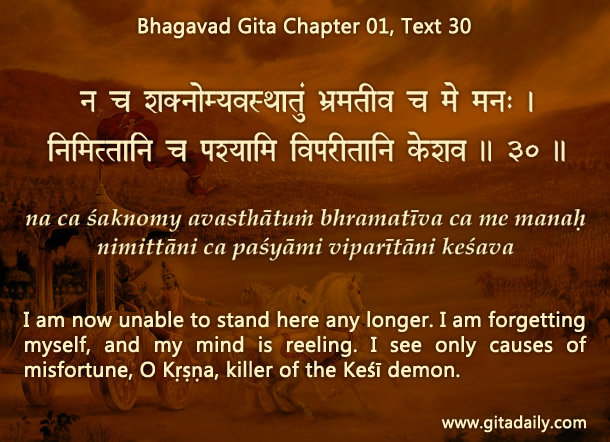“What should I do now?” When we face this question, we usually answer based on practical concerns. But when confronting dilemmas that have no practical solutions, we are forced to either become frustrated or look beyond the circumstantial to the existential, asking questions about the very nature and purpose of our existence. We realize we can’t answer the question “What should I do?” without confronting the question “Who am I?”
At the start of the Bhagavad-gita, Arjuna faced a circumstantial dilemma that had no practical answers. He found himself torn between two courses of action. “If I am a warrior, then my duty (kshatriya–dharma) is to fight for a righteous cause, whoever be my opponent. But if I am a member of the Kuru dynasty, then my duty (kula–dharma) is to avoid shedding the blood of my family members, whatever the price.” He found neither option acceptable and felt himself trapped in a lose-lose situation, as the Gita (01.30) depicts.
Krishna didn’t offer Arjuna any pat answers, but changed his frame of reference by revealing the deepest dimension of his existential identity – as a soul. And the dharma of every soul is to love and serve Krishna. As Krishna is the greatest well-wisher of everyone, doing his will enabled Arjuna to do the best for everyone involved.
When we face intractable circumstantial dilemmas, we too can turn towards Krishna by prayerfully seeking guidance and submissively opening our heart to him. With this devotional disposition, the Gita (10.10) assures that we will get the intelligence about how to best serve amidst life’s perplexities. Such intelligence will resolve not just our circumstantial crisis, but also our existential crisis by stimulating deeper realization of our eternal spiritual identity, which is for all of life’s perplexities the only ultimate solution.

Explanation of article:
https://www.youtube.com/watch?v=eFbRBbLFGrA

Leave A Comment